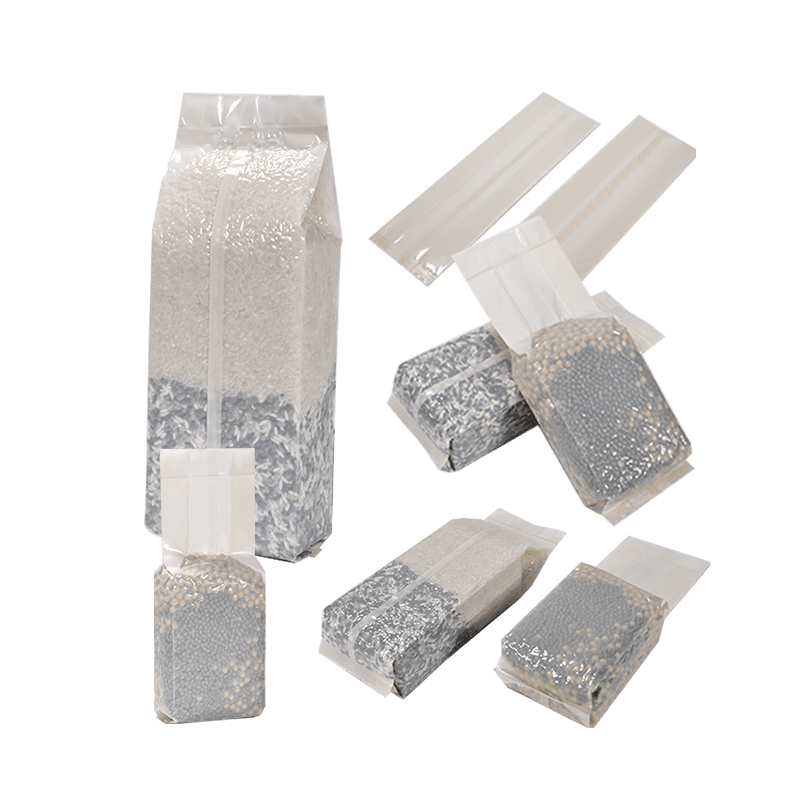How Biodegradable Vacuum Bags Balance Performance and Sustainability
The rise of biodegradable vacuum bags has sparked a revolution in the packaging industry, offering a sustainable alternative to traditional plastics while maintaining high performance standards. However, as with any innovation, there are technical challenges that need to be addressed to ensure these eco-friendly solutions meet the demands of modern businesses. From balancing biodegradability with durability to integrating cutting-edge technologies, manufacturers are constantly pushing the boundaries of what’s possible. Let’s explore how these challenges are being overcome and what the future holds for this transformative packaging solution.
One of the biggest hurdles in creating biodegradable vacuum-sealed bags is finding the sweet spot between degradability and shelf stability. On one hand, these bags need to break down naturally after use to reduce environmental impact. On the other hand, they must remain robust enough to protect products during storage and transportation. This delicate balance is achieved through advanced material science, where blends of PLA, PBAT, and PET are carefully engineered to degrade only under specific conditions, such as industrial composting environments. By fine-tuning these materials, manufacturers can ensure that the bags maintain their integrity throughout their lifecycle without compromising their eco-friendly properties. For businesses, this means they can rely on biodegradable vacuum-sealed options to perform just as well as—if not better than—traditional plastic packaging, all while contributing to a greener planet.
Another challenge lies in improving the mechanical strength of biodegradable films. While traditional plastics are known for their durability, biodegradable alternatives have historically faced criticism for being less sturdy. To address this, researchers are exploring new polymers and additives that enhance tensile strength and puncture resistance without sacrificing biodegradability. These innovations are particularly important for industries like food processing and pharmaceuticals, where packaging must withstand rigorous handling and extreme conditions. For example, vacuum-sealed bags made from biodegradable materials are now capable of withstanding freezing temperatures and moderate heat exposure, making them suitable for a wide range of applications. As these advancements continue, we can expect biodegradable vacuum bags to become even more versatile and reliable, further solidifying their place in the market.

Beyond material improvements, there’s also growing interest in integrating smart packaging technologies with biodegradable solutions. Imagine a world where your vacuum-sealed bag not only preserves freshness but also provides real-time updates on the condition of its contents. This isn’t science fiction—it’s the future of packaging. Companies are experimenting with incorporating features like time-temperature indicators and QR codes into biodegradable materials, enabling consumers and businesses to track product quality with ease. While integrating IoT-enabled sensors into biodegradable films presents technical challenges, such as ensuring compatibility and maintaining environmental safety, early prototypes show promising results. These innovations could transform industries by offering unprecedented levels of transparency and convenience, all while staying true to sustainability goals.
Of course, no discussion about biodegradable vacuum bags would be complete without acknowledging the role of consumer education. Many people still harbor misconceptions about biodegradable packaging, assuming it’s less effective or more expensive than traditional options. The truth is, these bags are designed to deliver exceptional performance while addressing the urgent need for reduced plastic waste. By educating consumers about the benefits of switching to biodegradable solutions—such as extended shelf life, superior barrier properties, and minimal environmental impact—businesses can drive adoption and foster a culture of sustainability. After all, when customers understand the value proposition of eco-friendly packaging, they’re more likely to support brands that prioritize it.
The journey to perfecting biodegradable vacuum bags is far from over, but the progress made so far is nothing short of remarkable. From overcoming degradation trade-offs to integrating smart technologies, manufacturers are proving that sustainability and performance can coexist harmoniously. As these innovations continue to evolve, businesses across industries—from food producers to pharmaceutical companies—have an incredible opportunity to lead the charge toward a more sustainable future. So whether you’re looking to enhance product protection, reduce your carbon footprint, or appeal to eco-conscious consumers, biodegradable vacuum-sealed bags offer a solution that’s as practical as it is planet-friendly. Embrace the change today and be part of the movement shaping tomorrow’s packaging landscape.

prevNo previous article
nextHow Biodegradable Vacuum Bags Revolutionize Food Safety and Hygiene Standards



 English
English 中文简体
中文简体 Español
Español
















